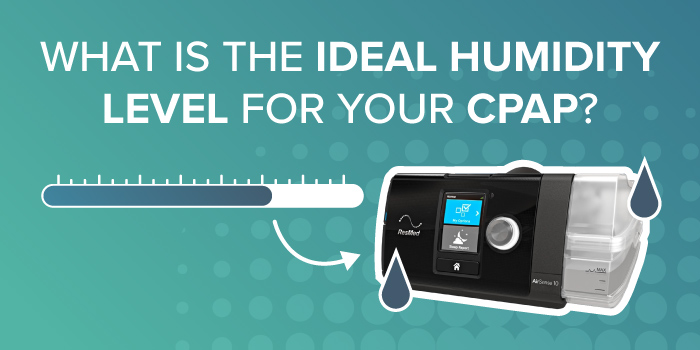Aug 29th 2022
Finding Your Ideal Humidity Level for CPAP Therapy

Just like every other aspect of your CPAP therapy, it's your own. Finding the right mask and machine is up to you, and each patient is diagnosed with their own pressure setting. Similar to finding the right size and fit for your CPAP mask, you'll need to find your ideal humidity level for CPAP for maximum comfort.
With that said, let's first take a look at whether you need a CPAP humidifier or not.
Do You Need a CPAP Humidifier?
The most common reason to use a humidifier with sleep therapy is that you wake up with a dry mouth, itchy nose, congestion, or general discomfort. Humidification will help by keeping the air moist. Your body naturally acts as a humidifier, but because CPAP therapy adds air to your lungs, your body can't keep up with the increased airflow. This is why CPAP humidifiers are so common.
Not everyone uses a humidifier, but if any of the below apply to you, we strongly encourage you to add humidification to your sleep apnea routine.
- Over 60 years old
- On two or more prescription drugs
- Persistent mucositis
- Regular sneezing
- CPAP therapy causes you to sneeze
- Persistent post nasal drip
- Removed uvula
- Sleep in a cool room
- Parched mouth
- Burning sensation in nostrils
Finding Your Ideal Humidity Level for CPAP Therapy
The beginning can sometimes be the most challenging part because you might not get it right on the first try. It takes trial and error and sleepless nights until you find the setting that provides you with comfortable sleep.
Where to Start
While recommendations may vary, we recommend you begin by setting your humidity at level 3 and adjust by .5 percent each night as needed. Increase your humidity level if your mouth is still dry and decrease it if it is too moist. We suggest you start lower than higher because you will experience improvement instead of over-humidification.
The Importance of Finding Your Ideal Humidity Level for CPAP
CPAP humidifiers can cause side effects if you use the wrong humidity level. These two side effects are persistent dryness and rainout.
Persistent Dryness
Extreme dryness can occur if you consistently use a humidity level that is too low, making your symptoms worse. To fix this, try increasing your humidity level by .5 percent each night until you find a comfortable setting.
Rainout
The second side effect is rainout, when water accumulates in your tubing due to heated air cooling too quickly. Rainout will make your face damp. You can prevent this by using a heated tube or heated humidifier to avoid cooler air in the tubing. Increasing your tube temperature will decrease the amount of water droplets in your tubing.
Buy Your Humidifier and Supplies at GoCPAP.com
GoCPAP.com is your one-shop stop for all your CPAP needs. Explore our various humidifier options along with many heated humidifier options and heated tubing.
Shop our Humidifiers
Shop our Heated Tubing











